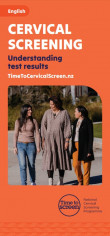Cervical screening | Whakamātautau waha kōpū
Human papilloma virus (HPV) screening
Key points about cervical screening
- In Aotearoa New Zealand, cervical screening used to be done by taking a sample of cells from your cervix. This was knows as a 'smear test'.
- From 12 September 2023 the cervical screening test changed to a human papilloma virus (HPV) screening test.
- HPV primary screening is important for anyone with a cervix who is aged between 25 and 69 years who has ever had any sexual contact.
- Screening is free for some people (see below).
- Treatment is available if your HPV screen result suggests it's needed.

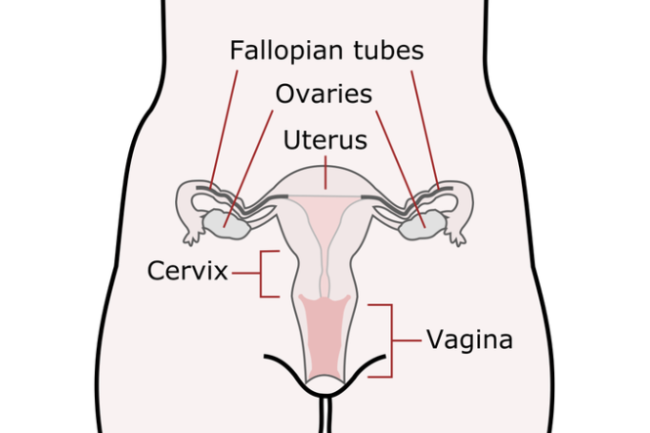
Image credit: 123RF
From 12 September 2023 the cervical screening test changed from a cervical sample test (previously known as a smear test) to a screen for human papilloma virus (HPV). The new screening method tests for the presence of HPV in your vagina so a cervical sample isn't needed. The vaginal swab can be taken by a healthcare provider or can be a self-taken swab.
If your vaginal swab comes back as having HPV detected, you'll need a follow-up check. Depending on the type of HPV detected, you might need a speculum examination and cervical sample (taken by a doctor or screen taker nurse), or you might need a referral to a specialist for a colposcopy.
Video: Cervical screening programme – HPV Screening
This video provides an overview of the HPV primary screening programme.
(Te Whatu Ora, NZ, 2023)
Is there a cost?
Screening is free for women and people with a cervix who:
- are Māori or Pacific Peoples, any age
- are 30 years of age and over who are under-screened (have not had a test in the past 5 years), or have never had a screening test
- require follow-up testing, any age
- hold a Community Services Card, any age.
Video: New cervical screening test is a game changer
In this video wahine talk about the new screening programme. The new cervical screening test is a game changer. It video may take a few moments to load.
(Te Whatu Ora, NZ, 2023)
Cervical screening is recommended if you:
- are a woman or trans or non-binary person (of any sexual orientation) with a cervix
- are aged between 25 and 69 and have ever had any sexual contact (including oral sex).
If you have had a hysterectomy (removal of your uterus/womb), check with your healthcare provider whether you still need to be screened. This will depend on what kind of surgery you had.
How long do I need to be screened for?
HPV Primary Screening continues to be offered from age 25 years to 69 years inclusive. It's been extended to age 70 years to 74 years inclusive for participants who haven't had a negative screen in the 5 years from the age of 65 years.
There are now 3 ways your test can be done:
- You may be able to do your own vaginal swab in private at your healthcare provider’s clinic/surgery or in an approved community setting. They will send the swab off for you to be tested for HPV.
- Your healthcare provider can do the vaginal swab for you during an appointment.
- You can have a healthcare provider take a sample from your cervix as before (smear test). If the sample tests positive for HPV a cytology (cell) test can then be done without you needing to go in for another test.
Vaginal swab
A vaginal swab is taken in a similar way to swabs taken for sexually transmitted infections (STIs). The vaginal swab is similar to a cotton bud, which needs to be inserted into your vagina and rotated a few times before going into a tube and being sent to the lab. Many women find the self-test much easier than a smear test.
Here's a factsheet describing how to do the HPV self-test in English(external link) and here's a te reo Māori version(external link).
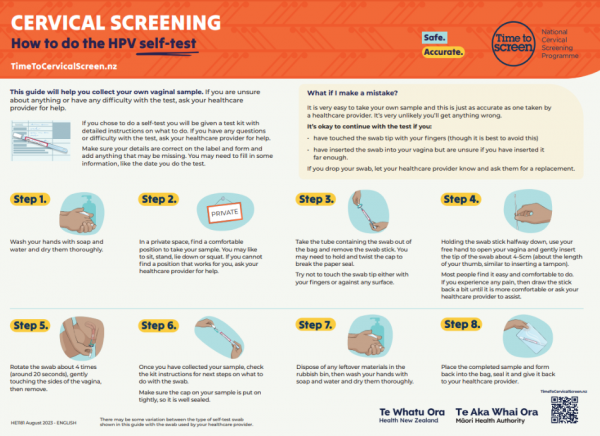
Image credit: Time to Screen National Cervical Screening Programme, NZ
Cervical sample
The following information still applies if you decide to have a cervical sample taken.
Having the sample of cells taken is very quick. Some people find it a little uncomfortable, but it shouldn’t hurt. If you’ve got your period, you can still have the test, provided bleeding isn’t too heavy. If it's heavy it could affect the test result..
Here’s how it usually works:
- The health professional doing the test will discuss what will happen with you – make sure they have explained it clearly.
- You can lie on your side or your back (whichever is more comfortable) with your knees bent up. Let the smear taker know what works best for you.
- It’s up to you how modest you want to be – cover up with the sheet provided if it feels better.
- They will open your vagina gently with a plastic or metal speculum.
- They will then use a small, soft brush to take a small sample of cells from the surface of your cervix.
- Once that's done, you can get dressed.
- They will tell you how you will get your results.
- Your test sample is sent to a laboratory and tested for HPV. If HPV is detected, the laboratory will examine the cells under a microscope.
- Your results will be sent to your health clinic after a couple of weeks.
- Further tests or treatment will be arranged if your results show that you need it.
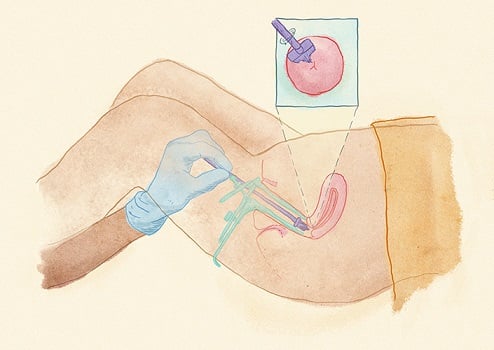
Image credit: Health Promotion Agency and Ministry of Health, NZ
Tips to help make things easier
Having a cervical smear can feel a bit awkward. Everyone has their own way of making it work. You may find the following tips help make your experience more comfortable:
- Wear a skirt you can leave on.
- Use the sheet or blanket provided to keep yourself covered and comfortable.
- Ask for a female smear taker.
- Ask whether someone from your culture can carry out the test for you.
- Try to breathe deeply and relax your legs.
- Try lying on your side.
- Take a friend or whānau member for support.
- Get your test done with a friend.
Where can I be screened?
You can be screened at:
- your healthcare provider’s clinic – if you would prefer a female doctor or nurse, ask when making the appointment
- community health services, eg, Māori health services, Pacific Peoples health services or women’s health services
- Sexual Wellbeing Aotearoa clinics(external link) – these are free for under 22-year-olds and low cost for people with a Community Services Card (see clinic fees(external link)).
Phone 0800 729 729 for local options in your area.
When does the new screening start?
The new approach to cervical screening starts on 12 September 2023, but it may take a while for everyone to be able to access it.
How often do I need to be screened?
Most people will only have to have the test done every 5 years instead of every 3 years. There are some exceptions however, eg, if you have a suppressed immune system, you should still be screened 3-yearly.
The screening gap can be safely extended to 5 years because the HPV test is a better first screening test. It’s a more sensitive test designed to find the cause of most cervical cancer. Cervical cancer often takes 10 years or more to develop. This means people at risk can be identified before cell changes begin to happen, so it’s safe to wait longer between screening tests.
Video: HPV self testing
Video: Me pēhea te mahi i te whakamātau tau ā kiri HPV
Video: O fa'atonuga nei e ta'u atu ia te oe le ala e fai ai lau lava Su'ega HPV
Your vaginal swab or cervical sample is sent to a laboratory where it's checked for the presence of HPV. A report is sent to your healthcare provider who will tell you about the results and if there is any follow-up needed.
Follow-up tests may be needed if there are any abnormalities.
There's always a small chance that some abnormal cells may not be found by the screening. Abnormal changes to the cervical cells progress very slowly, so it's very likely that any abnormal cells that are missed will be picked up at the next screen. If you notice bleeding after sexual intercourse, or in between your periods, it's best to see a healthcare provider for a check-up in case the bleeding is coming from your cervix.
Read more about the screening results and what they mean(external link).
The National Cervical Screening Programme (NCSP) was set up in 1990. It aims to reduce the number of people in Aotearoa New Zealand who develop cervical cancer and the number who die from it. The National Screening Unit is responsible for organising the programme, which includes promoting and coordinating cervical screening services, and the provision of laboratory and colposcopy services (for the management of people with abnormal results).
For more information visit the National Cervical Screening website(external link) or freephone 0800 729 729.
The following links provide further information about cervical screening.
Cervical screening(external link) Time to Screen, NZ
Why have regular smear tests(external link) Time to Screen, NZ
Māori cervical screening campaign(external link) Time to Screen, NZ
Apps
Resources
Cervical screening – your test, your choice!(external link) Time to Screen. NZ, 2023
Cervical screening – what you need to know(external link) Time to Screen. NZ, 2023
Cervical screening – what Pacific people need to know(external link) Time to Screen. NZ, 2023
Cervical screening – understanding your test results(external link) Time to Screen, NZ, 2023
Colposcopy – what you need to know(external link) HealthEd, NZ, 2023
Cervical screening reminder card(external link) HealthEd, NZ, 2021
Cervical screening – how to do the HPV self-test(external link) National Cervical Screening Unit, NZ English(external link), te reo Māori(external link)
References
- Changes to the test(external link) Time to Screen, NZ
Brochures
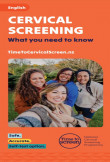
What Pacific people need to know
HealthEd and Ministry of Health, NZ, 2023
Credits: Healthify editorial team. Healthify is brought to you by Health Navigator Charitable Trust.
Reviewed by: Dr John McMenamin GP/Primary Care Lead National Screening Unit
Last reviewed:



